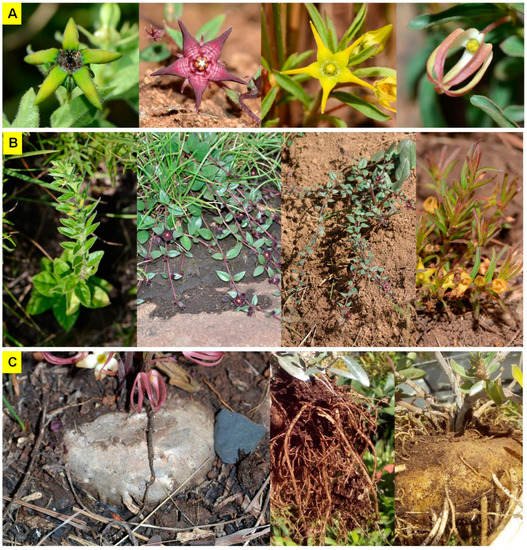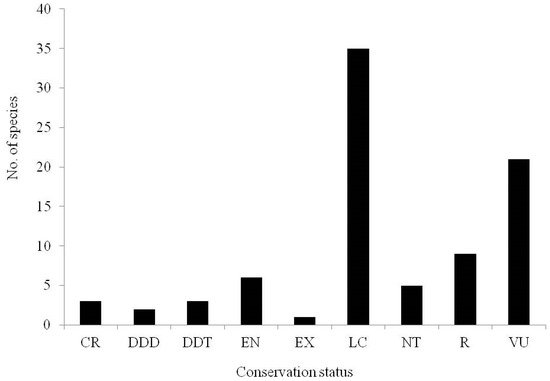The Brachystelma genus (family: Apocynaceae) consists of geophytes that are traditionally utilised among rural communities, especially in East Africa, southern Africa, West Africa, and northern and western India. Apart from being used as a food source, they are indicated as treatment for ailments such as colds, chest pains, and wounds. This review provides a critical appraisal on the ethnobotanical uses, nutritional value, phytochemical profiles, and biological activities of Brachystelma species.
- Apocynaceae
- conservation
- ethnobotany
- micropropagation
- phenolics
- food crop
1. Distribution and Botanical Description of Brachystelma Species
1.1. Distribution of Brachystelma Species
1.2. Overview of Botanical Aspects of Brachystelma Species

1.3. Taxonomy of Brachystelma Species
2. Ethnobotanical Applications of Brachystelma Species
2.1. Uses as Food and for Nutritional Needs
2.2. Applications as Herbal Medicine
3. Nutritional and Phytochemical Aspects
3.1. Nutritional Composition of Brachystelma Species
3.2. Phytochemical Profile of Brachystelma Species
4. Biological Activities of Brachystelma Species Extracts and Isolated Compounds
5. Conservation Status of Brachystelma Species and Sustainability
5.1. Conservation Status of Brachystelma Species
Brachystelma remain of conservation concern. Furthermore, the threats on members of the
Brachystelma genus have been reported in India [3]. Findings by Singh [29] revealed that
Brachystelma laevigatum
Brachystelma pauciflorum are currently vulnerable and endangered due to their use by local people as food and for their attractive foliage. According to Rajakullayiswamy et al. [5], Brachystelma
is currently indicated as being critically endangered. In India, the grasslands in which

Brachystelma thrive are often considered “wasted and unproductive” when left in the hands of nature and thus left unprotected [59]. In addition, these grasslands are often encroached on for agriculture and fragmented by urbanisation and invasive species.
